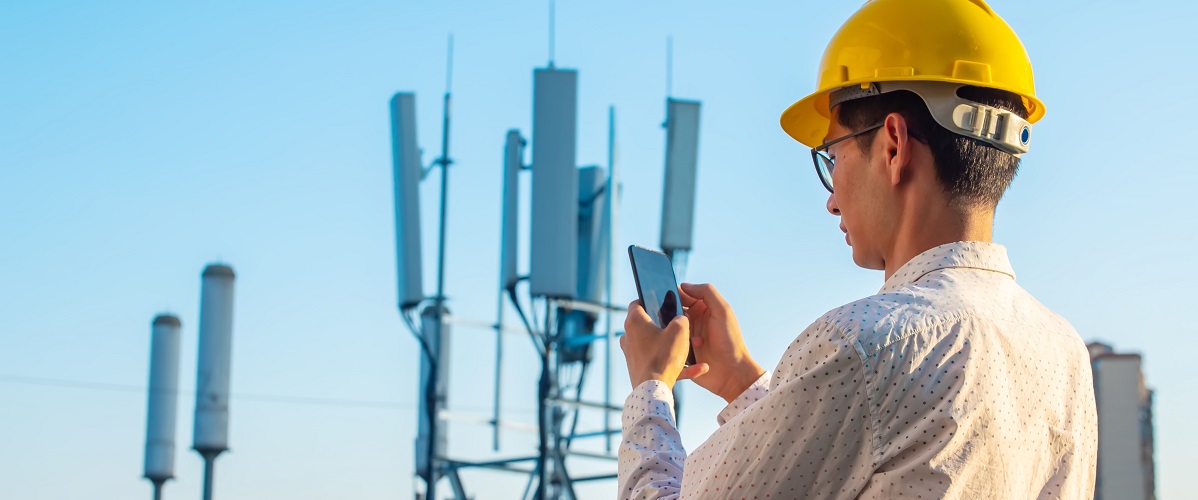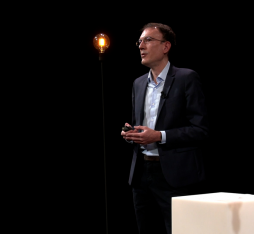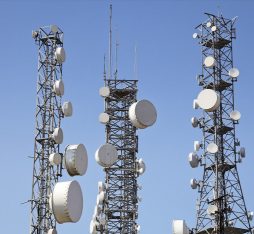Though the vocabulary may sound similar, the concept of a neutral network[1] centers around the provision of network infrastructure as a service to operators and differs from net neutrality, which guarantees the free distribution of content without discrimination on network infrastructure according to French telecommunications regulator ARCEP.
In addition to radio sites, towers and frequencies, it may also be also possible to share cloud infrastructure, particularly on the 5G access network.
Network sharing is already a reality, with radio towers and sites being shared and accessible to multiple operators. Beyond radio towers, network sharing is currently used in many countries with the goal of reducing costs and environmental impacts.
Many research works are being carried out in the areas of network architecture and business models. Orange is fully involved in this research through collaborative projects and standardization bodies, as well as other companies [1].
The GSMA makes a distinction between four types of network sharing between operators (Figure 1), corresponding to four types of infrastructure delivery business models based on whether the infrastructure service is provided by:
- One of the operators, in a “unilateral service provisioning” model,
- All of the operators, with each providing a part of the network, in a “mutual service provisioning” model,
- A joint-venture between operators,
- A neutral third-party stakeholder, known as a “third party service provider” model.

Figure 1: network sharing models
The first shared network elements already mentioned include sites, masts and towers. Where these are owned by a TowerCo [11], such as Cellnex or Totem in Europe, they host antennas for one or more operators, making them neutral (even though they may be subsidiaries of operators).
Distributed Antenna System (DAS) [4] is another element, which connects with a standard cellular radio access network and distributes the signal received to a set of antennas distributed as close as possible to the areas to be covered. This allows an operator to extend radio coverage in areas where the signal propagation is difficult — especially indoors, such as on company sites or in malls, stadiums, etc. A DAS is neutral and accessible to all operators, just like towers, but in this case the infrastructure is provided by a stakeholder that is completely outside the world of telecommunications (a company, mall, stadium, etc.).
Beyond towers and DAS systems, every part of a cellular network, the access network and the core network can also be shared. The 3GPP has set out [5] [6] [7] three types of network sharing architecture:
- A Multiple Operator RAN (MORAN) consists of sharing the entire radio access network (site, tower, antenna and power), except frequencies;
- A Multiple Operator Core Network (MOCN) involves sharing the entire radio access network, including frequencies;
- A Gateway Core Network (GWCN) adds core network sharing in addition to the radio access network.
The 3GPP does not cover the concept of neutral networks, instead using the term Participating Operator (POP) to indicate the party that benefits from shared resources and Master Operator (MOP) for the party that is sharing its resources. The MOP may be one of the POPs, a joint venture between the POPs or a third party (in the case of neutral networks). In the same way, there are also many open-source 5G network solutions [2] based on the 3GPP specifications that can serve as neutral networks by being deployed by third parties or by being deployed by an operator to provide infrastructure to third parties.
The 3GPP has also introduced the role of Credentials Holder (CH) in its specifications [5], which makes it possible to assign various functions useful for authentication and other functions in the 5G core network to the different stakeholders. In this way, an operator can offer its services to authenticate customers of one or more third-party networks, in particular stand-alone non-public networks (SNPNs), by sharing its functions that are useful for authentication.
Stand-alone non-public networks (SNPNs) are also specified by the 3GPP [5] and notably allow third parties to provide so-called localized services — in other words, services available according to location and/or duration requirements, typically for the duration of an event in a stadium or concert hall, etc. By connecting with this kind of neutral network, an operator can then provide these localized services to its own customers when they meet the validity conditions — without the need to take out a new subscription, as a contract between the two operators may suffice. Conversely, the operator may opt to develop neutral networks to support localized services offered, such as those around the Orange Vélodrome stadium in Marseille.
Conclusion and Outlooks
The sharing of network elements aims, as the primary intention of the operators involved, to achieve gains in OPEX/CAPEX, make better use of sites and resources and provide benefits for the environment (lower energy consumption and an improved visual impact). Network sharing was first implemented with radio network infrastructure, which represents about 70% of the cost of deploying a network [1] (3GPP standardization of radio access network sharing models, including frequency sharing or not, MORAN and MOCN respectively). Beyond radio sites, towers and frequencies, it is now possible to share additional elements, such as cloud infrastructure, with the fragmentation of different 5G access network elements offered by O-RANs [8] [9]. The 3GPP standard has also introduced network architectures that are more open, such as the GWCN model (sharing the core network in addition to the radio access network) and other network types that can be shared, such as SNPNs offering localized services or Credentials Holders containing authentication functions.
New opportunities are opening up for operators, who can not only share their network with other operators but can also become third-party operators of neutral networks by offering localized services and/or IaaS, NaaS and PaaS solutions.
New risks may arise with network fragmentation as operators become dependent on third parties for the deployment and end-to-end performances of their networks that contain third-party network elements. This creates a need for security at the interfaces with the networks of third-party operators and a need for clear contractual agreements with them, so that end-to-end commitments with their customers can be assured.
As for Orange’s research, the topic of network sharing was the subject of a mini-conference during the most recent Open Tech days [10], accompanied by a demonstration on the Magma open-source network as a solution to extend network coverage with Sonatel. Research is ongoing, including the study and evaluation of innovative architecture scenarios.
[1] This term differs from net neutrality (EU Open Internet Access Regulation), which prohibits operators providing Internet access from blocking, slowing down or discriminating between network traffic.
[2] These include Open5GS, Free5GC, OpenAirInterface and Magma [3], some of which have products available on the market.
Glossaire :
CH – Credentials Holder
CN – Core Network
DAS – Distributed Antennas System
GWC – Gateway Core Network
IaaS / NaaS / PaaS – Infrastructure/Network/Platform as a Service
MOCN – Multiple Operator Core Network
MORAN – Multiple Operator RAN
RAN – Radio Access Network
(S)NPN – (Stand-alone) Non-Public Network
Sources :
- How neutral hosts are-reinventing the infrastructure game
- GSMA Infrastructure Sharing: An Overview
- Introduction · Magma Documentation
- What are Distributed Antenna Systems (DAS)? – everything RF
- 3GPP TS 23.501 System Architecture for the 5G System
- 3GPP TS 23.251 Network Sharing; Architecture and functional description
- 3GPP TS 32.130 Network sharing; Concepts and requirements
- O-RAN Software
- Open RAN Sharing Makes Shared Access Networks More Open
- Video of the short conference held about neutral networks (Orange Open Tech Days, 2023)
- https://rai2021.orange.com/wp-content/uploads/sites/47/2022/05/decryptage-infras.pdf










